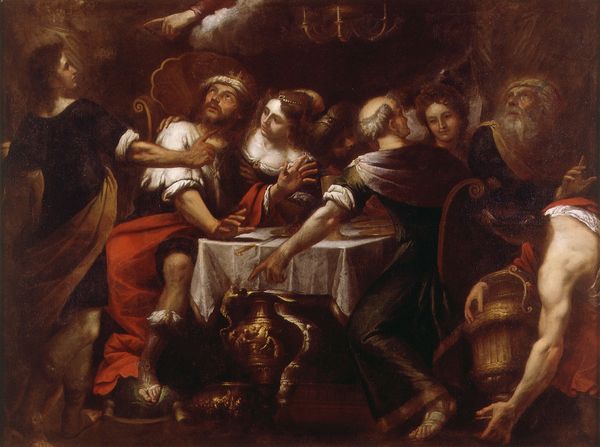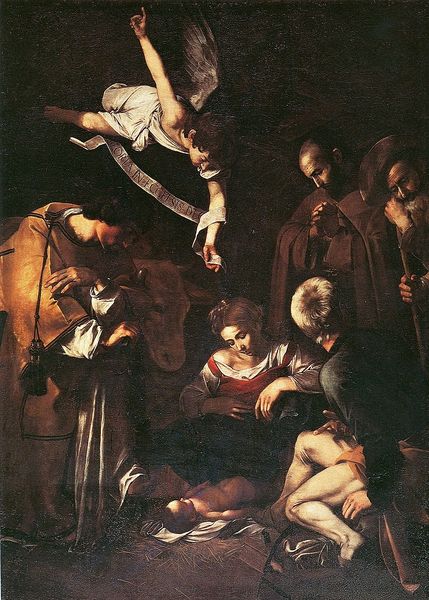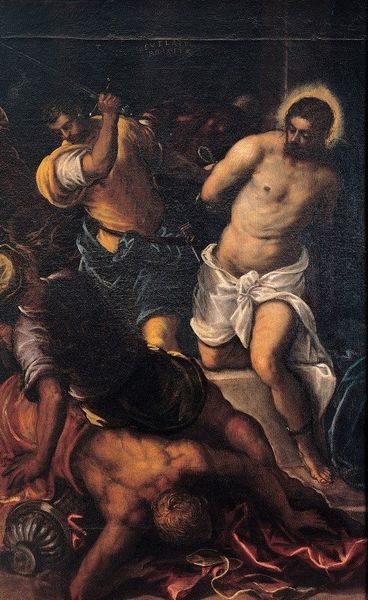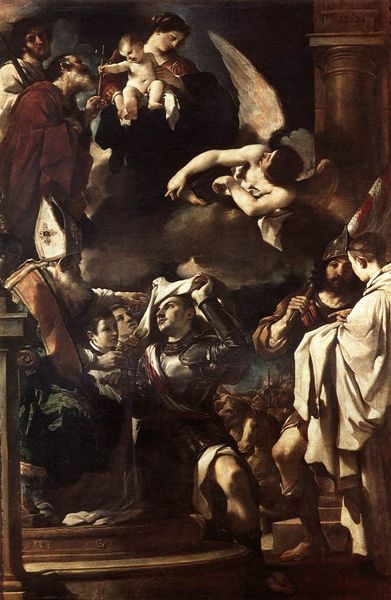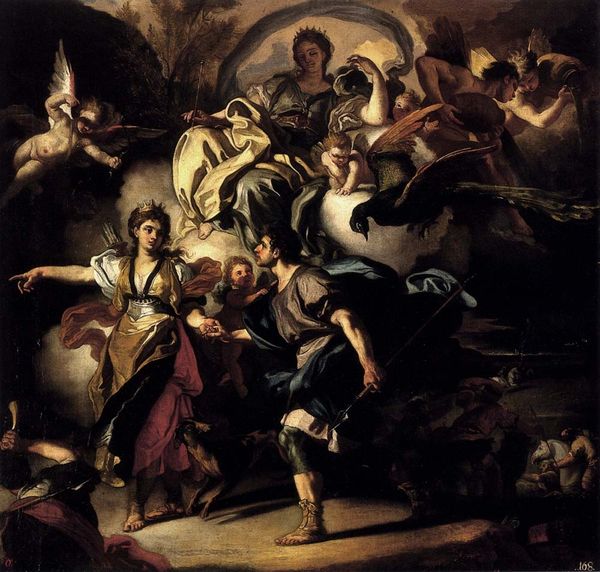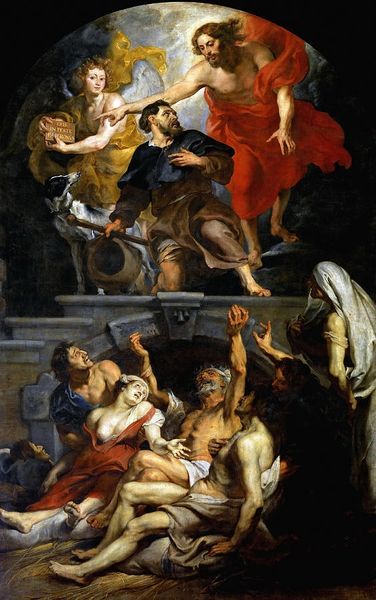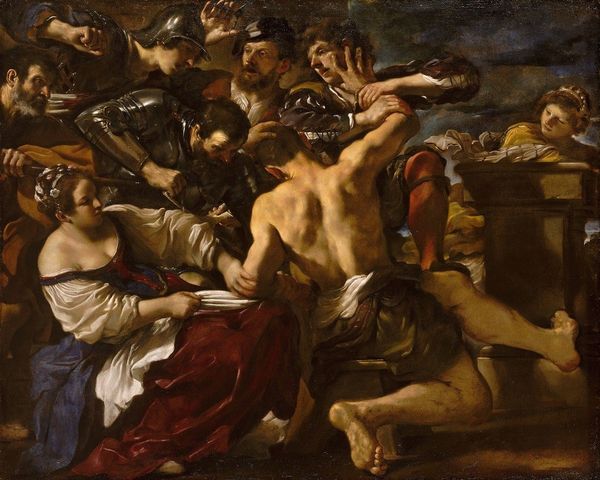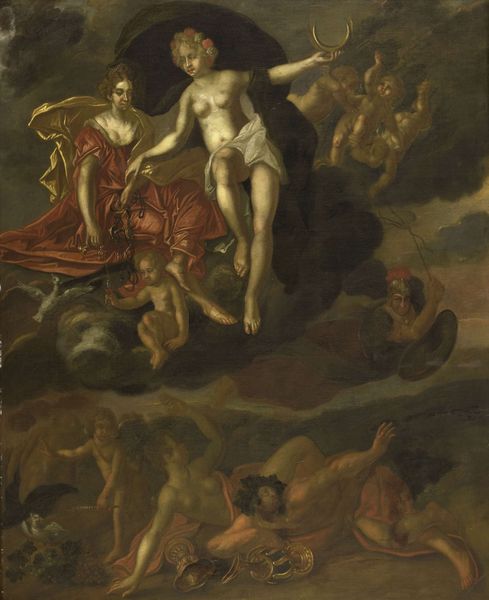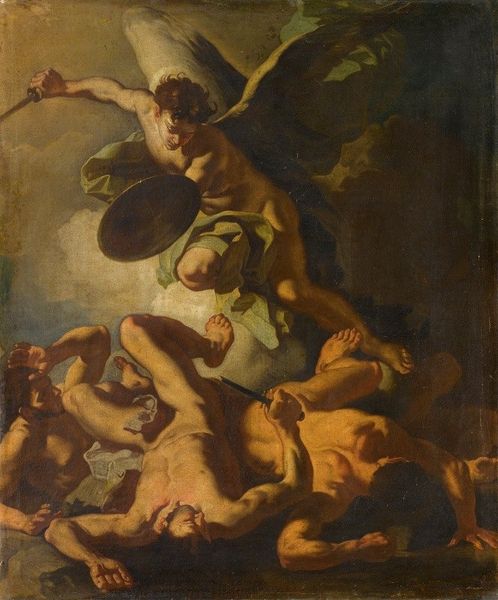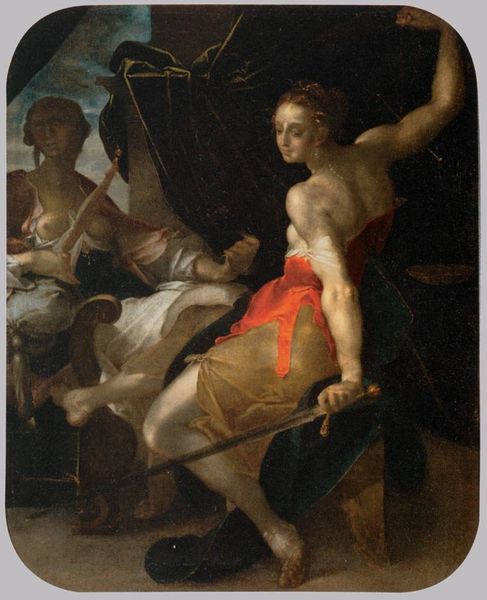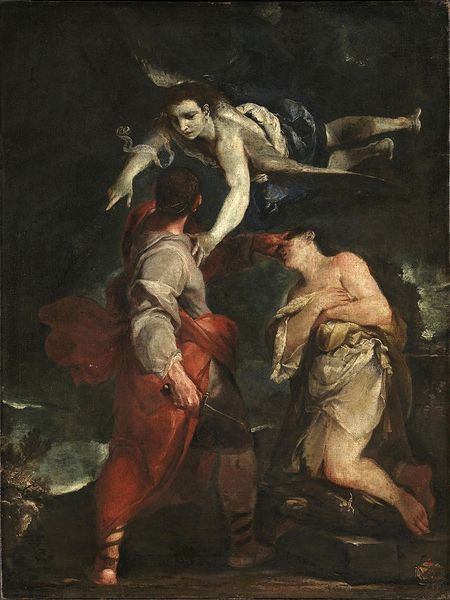
oil-paint
#
portrait
#
dark place
#
baroque
#
oil-paint
#
sculpture
#
figuration
#
chiaroscuro
#
history-painting
Copyright: Public domain
Editor: So, this is Giuseppe Maria Crespi’s "Ecstasy of St. Margaret of Cortona" from 1701. Painted with oil on canvas, the dramatic use of light and shadow is striking. What underlying social or political issues might Crespi be addressing through this representation of religious ecstasy? Curator: A crucial question. Crespi's Baroque style, here, serves as more than mere decoration. The intense chiaroscuro amplifies the drama, pulling the viewer into Margaret's inner turmoil, don't you think? What impact might such dramatic displays of emotion have on women navigating patriarchal societal roles during that time? Editor: That’s interesting… It almost feels like Crespi's giving Margaret agency by showcasing such intense emotion, but is it truly empowerment, or a spectacle for the male gaze of the time? Curator: Precisely! It's about navigating that tension. Her ecstasy can be read as submission to divine authority, sure, but also a powerful disruption of social norms through embodied experience. Does this contrast within a deeply religious environment potentially offer a sanctioned outlet for marginalized voices? Editor: It’s like he's both reinforcing and questioning the status quo, making a complicated commentary. Is it then less about individual piety and more about the politics inherent in displaying intense emotion, especially for women in that era? Curator: Absolutely. We see these portrayals now through the lens of gender dynamics and societal expectations placed on women throughout history. The female body became the location upon which wider issues about power, resistance, and devotion are contested. Editor: That gives me a lot to think about in how art portrays and influences cultural perspectives. Curator: Indeed. And seeing it in this way enables us to explore beyond the canvas into our contemporary perspectives about identity.
Comments
No comments
Be the first to comment and join the conversation on the ultimate creative platform.

